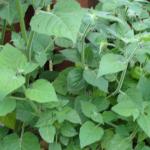Growing Cape Gooseberry, also Golden Berry, Inca Berry
Physalis peruviana : Solanaceae / the nightshade family
| Jan | Feb | Mar | Apr | May | Jun | Jul | Aug | Sep | Oct | Nov | Dec |
|---|---|---|---|---|---|---|---|---|---|---|---|
| S | S | S | S | ||||||||
| T | T | T | T | T | T | ||||||
| P | P | P | P | P | P |
(Best months for growing Cape Gooseberry in Australia - tropical regions)
- S = Plant undercover in seed trays
- T = Plant out (transplant) seedlings
- P = Sow seed
- Easy to grow. Sow in garden. Sow seed at a depth approximately three times the diameter of the seed. Best planted at soil temperatures between 10°C and 25°C.
- Space plants: 100 - 150 cm apart
- Harvest in 14-16 weeks.
- Compatible with (can grow beside): Will happily grow in a flower border but tends to sprawl over other plants.
A straggling bush up to one metre tall that bears yellow fruits inside a brown papery envelope. It is perennial. The cape gooseberry is related to tomatillo, ground cherry and husk tomato, all in the genus Physalis.
Cape Gooseberry is very easy to grow and as the fruit are popular with birds the plants can be easily spread around the garden. If you have plenty of room then plants grow better with 1.5 m of space. Spacing closer works but you may get less fruit.
Culinary hints - cooking and eating Cape Gooseberry
The berry is the size of a cherry tomato, is very aromatic and full of tiny seeds. They are delicious eaten fresh or can be made into jam. They can be added to salads, desserts and cooked dishes, they are delicious stewed with other fruit, especially apples. They also go well in savoury dishes with meat or seafood. Can be preserved dried as 'Inca Berries'




Your comments and tips